
According to the Moldovan law on territorial administrative organisation, Moldova is divided administratively into the following administrative territorial units: districts, cities/towns and villages. The administrative territorial organization of Moldova is made on 2 levels:
- villages (communes), sectors and cities/towns (municipalities) constitute the first level,
- districts, Chișinău municipality, Bălți municipality and Bender municipality constitute the second level.

Cârța is a commune in Romania, located in Harghita County. It lies in the Székely Land, an ethno-cultural region in eastern Transylvania. The commune is composed of two villages:

Dudeștii Vechi is a commune in Timiș County, Romania. Dudeștii Vechi is mostly populated by Banat Bulgarians (Palćene), a regional minority group of ethnic Bulgarians that profess Roman Catholicism, who came from northern Bulgaria, and who are descendants of Paulicians that settled in the area around 1738. At the 2011 census, the total population of the commune numbered 4203 people.

Atid is a commune in Harghita County, Romania. It lies in the Székely Land, an ethno-cultural region in eastern Transylvania.

A commune is the lowest level of administrative subdivision in Romania. There are 2,686 communes in Romania. The commune is the rural subdivision of a county. Urban areas, such as towns and cities within a county, are given the status of city or municipality.

Socol is a commune in Caraș-Severin County, Romania. In 2011, the population of the commune numbered 1,873 people and its population was ethnically mixed. It is composed of five villages: Baziaș, Câmpia, Pârneaura, Socol and Zlatița.
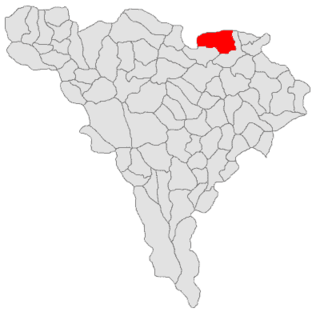
Unirea, previously Vințu de Sus, is a commune located in the north-east of Alba County, Romania. It is composed of six villages: Ciugudu de Jos (Alfüged), Ciugudu de Sus (Felfüged), Dumbrava (Dombró), Inoc (Inakfalva), Măhăceni (Aranyosmohács) and Unirea.

Bistra is a commune in Maramureș County, Romania. The Ukrainian border is located to the north of the commune. The first documentary mention of the settlement dates to 1411.
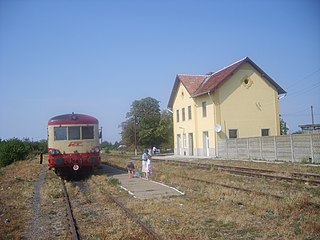
Jamu Mare is a commune in Timiș County, Banat, Romania.

Căbești is a commune in Bihor County, Crișana, Romania, around 13 kilometers north of the town of Beiuș.

Ciucsângeorgiu is a commune in Harghita County, Romania. It lies in the Székely Land, an ethno-cultural region in eastern Transylvania.
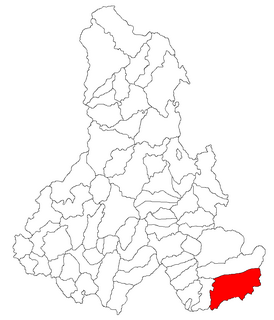
Plăieșii de Jos is a commune in Harghita County, Romania. It lies in the Székely Land, an ethno-cultural region in eastern Transylvania.

Siculeni is a commune in Harghita County, Romania. It lies in the Székely Land, an ethno-cultural region in eastern Transylvania. The Siculicidium took place here.

Band is a commune in Mureș County, Romania, composed of eleven villages:
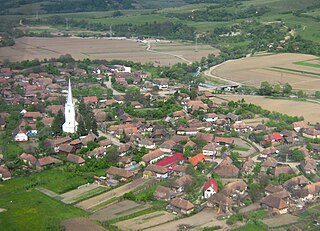
Chibed is a commune in Mureș County, Romania, composed of a single village, Chibed. It lies in the Székely Land, an ethno-cultural region in eastern Transylvania. The village is famous for the onion produced in the village and sold in front of the houses along the main road.

Ghindari is a commune in Mureș County, Romania. It lies in the Székely Land, an ethno-cultural region in eastern Transylvania.

Cacica is a commune located in Suceava County, Romania.
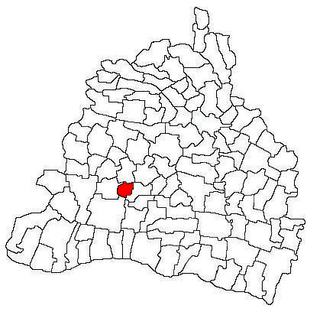
Galiciuica is a commune in Dolj County, Oltenia, Romania with a population of 1,760 people. It is composed of a single village, Galiciuica, part of Giubega Commune until 2004, when it was split off.
According to the Moldovan law on territorial administrative organisation, two or more villages can form together a commune.




















